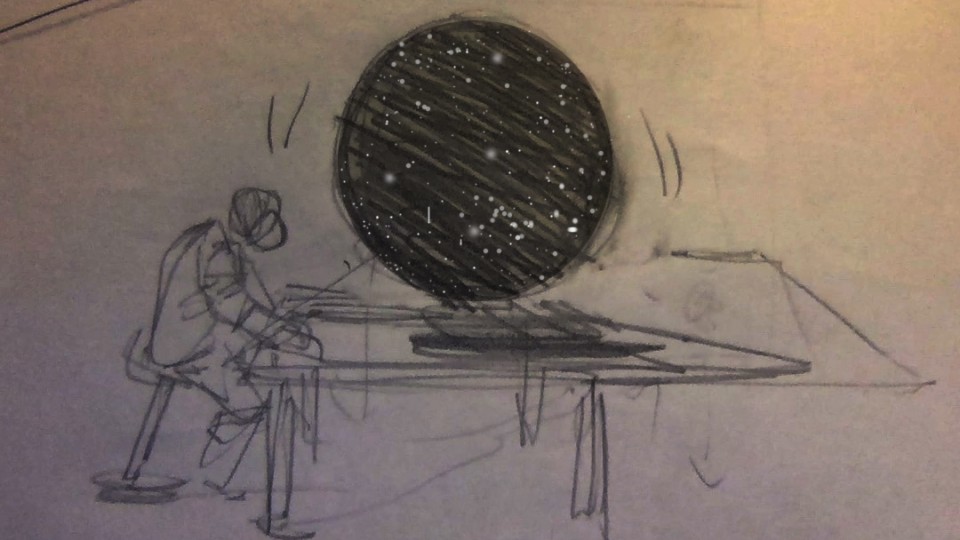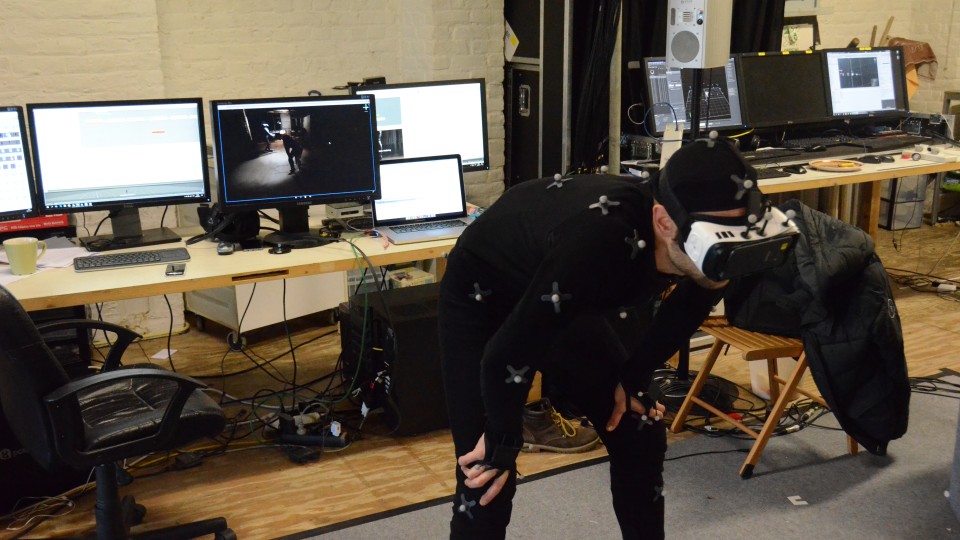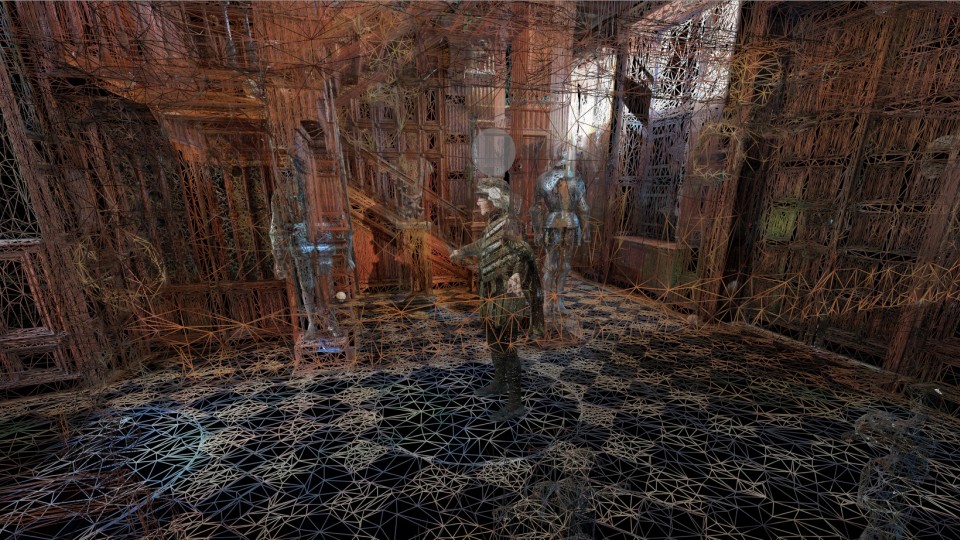
Aneta Mancewicz on ‘Liveness’.

For the most part of theatre’s long history, the understanding of performance as a medium has relied on the actors and audience members being in the same place at the same time. The co-presence was a fundamental condition allowing the actors to perform for audience members, who, in turn, could watch each other experiencing the theatrical event. Thus, from the antiquity onwards theatre has been associated with seeing others and being seen. Indeed, etymologically, the word ‘theatre’ stems from the Greek word ‘theatron’ – ‘watching area’ that described the seating area for the audience, from which they could view the performance.1 Such an understanding of theatre has persisted at least until the twentieth century, as evidenced by Peter Brook’s definition in his seminal Empty Space (1968).2 The director famously observed, ‘I can take any empty space and call it a bare stage. A man walks across this empty space whilst someone else is watching him, and this is all that is needed for an act of theatre to be engaged.’3 That profound feeling of being physically together and focused on each other, as articulated by Brook, can be still found today in different venues and contexts: from replicas of early modern theatres to public spaces used as stages for promenade performances. In fact, the architecture of early modern outdoor playhouses has been particularly effective in ensuring the communal experience of watching: audience members gathered around the stage in the daylight will necessarily be both the observers and the observed.
Paradoxically, as long as theatre relied exclusively on the spatial and temporal co-presence of actors and audiences, it was not considered to be ‘live.’ As Philip Auslander has famously argued, the very concept of ‘liveness’ emerged only with the evolution of recording, more specifically, with the rise of radio as a medium which has made it difficult for audiences to distinguish between recorded and unrecorded content, and which, in turn, has made it necessary to introduce new terminology to demarcate one from the other.4 According to Auslander, radio technology has ‘put the clear opposition of the live and the recorded into a state of crisis,’ which has resulted in ‘a terminological distinction that attempted to preserve the formerly clear dichotomy between two modes of performance— the live and the recorded— a dichotomy that had been so self-evident up to that point that it did not even need to be named.’5 Consequently, the concept of ‘live performance’ has a relatively short history, which goes back to the beginning of the twentieth century or perhaps the middle of the nineteenth century, but not earlier.6 In the twenty-first century, the terms ‘live,’ ‘mediated,’ and ‘mediatized’ gained exceptional popularity in theatre and performance discourse. ‘Mediatization’ in Auslander’s sense of being ‘a product of the mass media or of media technology’7 became a particularly common term, used as a counterpoint to ‘liveness.’
Liveness is thus a product of technological recording and reproduction.8 However, this does not mean that liveness and mediatization are contrasting and mutually exclusive categories, even if the early definitions of liveness in theatre and performance studies enforced their opposition. In the context of the growing importance of electronic media, liveness was defined from an ontological perspective, which meant that it was associated with clear and constant characteristics, independent from changing forms of staging and audience perceptions. Insisting on the co-presence of actors with the audience as a defining principle of theatre, scholars such as Bernard Beckerman (1979)9 and Peggie Phelan (1993)10 have foregrounded the idea of liveness as a concept separate from or even incompatible with media influence and interference. Matthew Reason and Anja Mølle Lindelof have labelled such positions as ‘essentialist,11 arguing for a novel approach to liveness that would transcend the dichotomy of liveness and mediatization and instead focus on the audience experience. To achieve these two purposes, their co-edited essay collection, Experiencing Liveness in Contemporary Performance (2016), has sought ‘to interrogate how liveness is produced through processes of audiencing – as spectators bring qualities of (a)livness into being through the nature of their attention – and processes of materializing in acts of performance, acts of making, acts of archiving and acts of remembering.’12 Pascale Aebischer and Susanne Greenhalgh took a similar approach in their co-edited essay volume, Shakespeare and the ‘Live’ Theatre Broadcast Experience (2018),13 where they turned their attention to ‘a phenomenological concern with reception,’ and, more precisely, to ‘medium-specific modes of audience participation and the diverse ways in which Anglo-American and worldwide audiences engage with Shakespeare (and with one another) through digital media.’14 The two collections, like many other recent publications in the field15 have shown that liveness is an evolving and complex concept, with manifold meanings not only within theatre and performance studies but also in other fields.
A fundamental factor in the evolution of liveness has been the growing importance of digital technologies and media in contemporary culture and performance, as articulated by several scholars.16 One might distinguish three areas, in which the influence of electronic and digital media on liveness manifests itself most visibly. First, it results in the blurring of differences between liveness and mediatization ‘because live events are increasingly either made to be reproduced or are becoming ever more identical with mediatized ones.’17 Parallel to this, broadcast or remote performances seek to imitate the strategies of liveness by creating conditions for the feeling of community and presence. At the same time, digital technologies and their modes of organising human experience have become so widespread that theatre makers have to consider them when addressing contemporary spectators. Second, the pervasiveness of mediatization has led to the growing appreciation of liveness among artists, audiences, and academics. Martin Barker, for instance, identifies ‘virtual performance studies’ as a new and important field in which ‘[l]iveness” is not a descriptive or normative concept, but a tool and a goal. Its question appears to be not whether liveness is present, but how can we make people feel that it is?’.18 The concept has to be thus fundamentally reconfigured and reimagined for the conditions of virtual performance, which leads us to the third area of influence and which concerns new technologies inspiring new forms of liveness. Once video projections and live-feed video have become pervasive on theatrical stages since the mid-1980s, their inclusion has multiplied temporal and spatial perspectives of performance, leading to complex layerings and juxtapositions. Similarly, the growing popularity of mixed reality performance in the twenty-first century has allowed the spectators to experience liveness within the continuum of full physical presence and absolute virtual immersion as well as within combinations of real and virtual elements. Most recently, the explosion of online theatre and remote communication during the COVID-19 pandemic has revealed a whole spectrum of cultural and social interactions for which new terminologies had to be invented. Perhaps such terms as ‘hybrid’ events, and ‘synchronous’ versus ‘asynchronous’ communication are just the beginning of another major shift in our thinking about liveness.
1/ James Renshaw, In Search of the Greeks (London: Bristol Classical Press, 2008), 99.
2/ Peter Brook, The Empty Space (New York: Simon & Schuster, 1964).
3/ Brook, The Empty Space, 7.
4/ Philip Auslander, Liveness: Performance in a Mediatized Culture, 2nd edition (London: Routledge, 2008), 59.
5/ Auslander, Liveness, 59.
6/ Auslander, Liveness, 58.
7/ Auslander, Liveness, 4.
8/ Auslander, Liveness, 56.
9/ Bernard Beckermann, Dynamics of Drama (New York: Drama Books, 1979).
10/ Peggy Phelan, Unmarked: The Politics of Performance (London: Routledge, 1993).
11/ Matthew Reason and Anja Mølle Lindelof, Experiencing Liveness in Contemporary Performance: Interdisciplinary Perspectives (Abingdon and New York: Routledge, 2016), 3.
12/ Reason and Lindelof, Experiencing Liveness, 3.
13/ Pascale Aebischer and Susanne Greenhalgh, ‘Introduction: Shakespeare and the “Live” Theatre Broadcast Experience,’ Shakespeare and the ‘Live’ Theatre Broadcast Experience, ed. Pascale Aebischer, Susanne Greenhalgh and Laurie E. Osborne (London: The Arden Shakespeare). doi.org/10.5040/9781350030497.0008.
14/ Aebischer and Greenlagh, Shakespeare and the ‘Live’ Theatre Broadcast Experience, 2.
15/ Christopher Balme, ‘Surrogate Stages: Theatre, Performance and the Challenge of New Media.’ Performance Research 13:2 (2018): 80– 91. doi:10.1080/13528160802639342; Philip Auslander, ‘Digital Liveness: A Historico-Philosophical Perspective,’ PAJ: A Journal of Performance and Art, Vol. 34, No. 3 (September 2012): 3- 11; Martin Barker, Live To Your Local Cinema: The Remarkable Rise of Livecasting (Basingstoke: Palgrave Macmillan, 2013). doi: 10.1057/9781137288691.
16/ Balme, ‘Surrogate Stages’; Auslander, ‘Digital Liveness’; Barker, Live to Your Local Cinema; Sarah Bay-Cheng, Jennifer Parker-Starbuck, David Z. Saltz, Performance and Media: Taxonomies for a Changing Field (Ann Arbor: University of Michigan Press, 2015).
17/ Auslander, Liveness, 35.
18/ Barker, Live to Your Local Cinema, 58.




